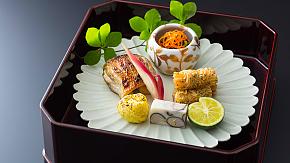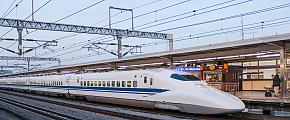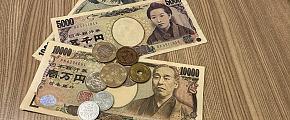Obon (Bon) Festival 2025, the Japanese Ghost Festival
From July to September, the end of summer to early autumn, Japan thrives with vibrant forms of festivals and events. Highly anticipated for its great significance and brilliant highlights, Obon, known as the Ghost Festival, is one of the extraordinary events during this time. Today we'll show you all the details about the Obon Festival. If you're planning a Japan tour in August, put this hard-to-beat festive occasion on your list.
Why Celebrate the Obon Festival?
The Obon Festival, or Bon Festival, also known as the Japanese Ghost Festival, is said to be the second-largest celebration nationwide after the New Year. It has a deep Buddhist root with a long history of about 500 years.
According to Buddhist legends, around 15 July in the lunar calendar is the time when the spirits of ancestors are allowed to return to earth, making it a significant time for gathering with the late family and ancestors.
During the festival, many Japanese return home with their families to honor their ancestors and pay tribute to their deceased loved ones.
Obon contains many fascinating aspects of Japanese culture, from sacrifice and dancing (bon odori) to carnival parades and lantern displays. Chances are you will have an exciting experience at this traditional festival.
When Is the Obon Celebrated? July or August?
The Obon Festival is typically a 4-day celebration from 13 to 16 August, often falling around 15 July in the lunar calendar. The date may have subtle differences among certain regions of Japan, like the Obon in Okinawa, which will fall from 4 to 6 September 2025.
How to Celebrate the Obon Festival
Day 1 Mukaebi, Making Offerings & Sweeping Tombs
13 August, the first day of the Bon festival, usually begins with Mukaebi (welcoming fires), when you can see families build small bonfires outside their homes or hang paper lanterns inside and light them at dusk to welcome their ancestral spirits home.
Making Offerings
Japanese people will set up altars at shrines or temples with food offerings and memorial tablets or gifts. Making food offerings is a big preparation for the Bon celebration.
The most important offering is Syouryouuma, the animal figurines. It is made of cucumber or eggplant with the insertion of four bamboo sticks in the shape of cattle or horses. This special offering is thought to be transportation, which means traveling spirits to Earth and the underworld.
Sweeping Tombs
Apart from the offering, Japanese families gather to clean the graves of their ancestors. Elders will talk to their ancestors and tell them what happened on earth. Family members pour water and place chrysanthemum flowers on the gravestone to show their deep respect and sorrow for the deceased.
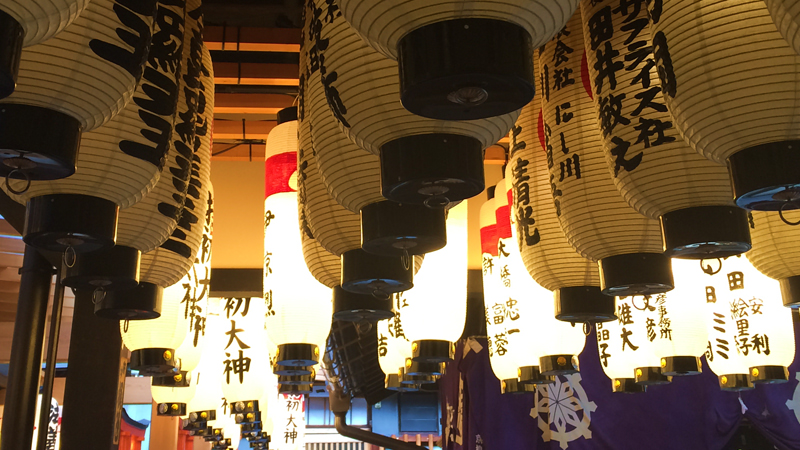 Japanese Lanterns
Japanese Lanterns
Day 2-3 Hoyo, Sutra Recitation & Memorial Service
From 14 to 15 August, the second and third days are the hoyo or kuyo period of the Bon festival. Families traditionally invite a Buddhist priest to their home for a short ceremony or visit the local temple to recite a sutra and hold a memorial service.
After the recall of the deceased, the family will enjoy a vegan meal usually including beans, tofu, spinach, and ramen, to show respect for their loved one.
Day 4 Okuribi, Bon Odori Dances & Chochin Lantern Floating
16 August marks the final day of the Bon festival, traditionally ending with a grand farewell bonfire called Okuribi, which corresponds to the Mukaebi bonfire that starts the festival.
Bon Odori Dances
Bon Odori, a traditional kind of folk dance in Japan, is definitely a never-missed part of the Obon Festival. At first, it is a distinct Buddhist tradition to please and show the souls of ancestors, has now become a large event of the celebration.
The basic performers of the activity include dancers, singers, and musicians, all dressed in summer kimonos called yukata. The iconic part can be the taiko performance. Dancers circle the yagura, a high wooden bandstand for the musicians and singers, and play taiko drums, making stirring sounds to revivify both viewers and the ancestors' souls.
The dancing takes place in many venues, like gardens, parks, shrines, or temples. The performance comes in different forms depending on region to region. You can enjoy different styles of lyrics, music, and dance moves based on the region's cultural differences, like the three energetic styles: Awa Odori in Tokushima, Gujo Odori, and Nishimonai Odori in Akita.
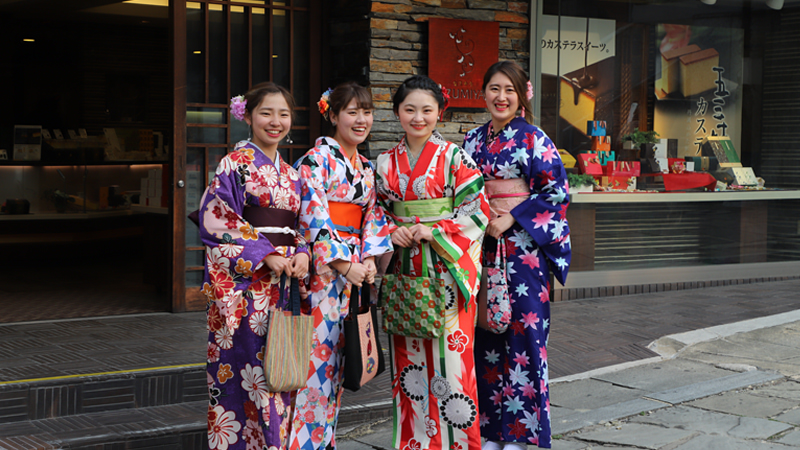 Summer Kimono, Yukata
Summer Kimono, Yukata
Chochin Lantern Floating
As well as hanging Oban lanterns from homes and along streets, Japanese people also make Chochin lanterns (toro nagashi). It has become a popular and impressive way to welcome and bid farewell to the souls of the ancestors.
The paper lanterns come in a variety of shapes and are painted with beautiful floral or animal designs. When night falls, the locals light the lanterns and release them into the river. It is believed that the spirits of their ancestors are sent up into the sky by these floating lanterns down the river to the sea.
As a symbolic way of remembering the dead ancestors, the chochin floating lantern creates a beautiful and spectacular sight that delights the eyes of thousands of participants.
Welcoming Fires (Mukaebi) & Farewell Fires (Okuribi)
At the beginning and end of the Obon festival, a symbolic shower of fire is lit up at night in Japan to direct the spirits of ancestors to Earth and the afterlife.
On the 13th day, welcome fires, known locally as Mukaebi, are made by lighting rows of lanterns that hang in houses and along streets, guiding the spirits of the deceased home.
On the night of August 16th, during Okuribi, people light large bonfires on hillsides or riverbanks, often accompanied by singing and dancing. In Kyoto, five enormous bonfires are ignited on different mountains, each in distinct shapes like characters, boats, or animals. The intense glow of these flames is believed to guide the spirits of the deceased back to the underworld.
Where to Experience the Obon Festival
The Bon Festival is a big feast across Japan. Each region has distinct customs and rituals in celebration of the souls of their own ancestors. For marvelous engagement in an impressive range of spectacles, there are three recommended destinations to fully experience the Obon: Kyoto, Sasebo, and Tokushima.
Kyoto, Ceremonial Bonfires of Gozan Okuribi
The Obon festival gained great fame for the grand ceremony held in Kyoto, Gozan Okuribi, also known as the Daimonji Festival. It is good-sized lighting of five mountains, typically held at 8 p.m. on August 16th.
Kyoto monks will gather on the hillside and light the bonfires on five mountains one by one. The bonfires, respectively, are shaped as kanji characters of large (the most magnificent and famous), lotus, boat, and tori gate. The gigantic fires are perceived as a significant guide to pure land for the spirits. Kyoto, boasting the Daimonji sight, has become a popular destination to visit the Obon festival.
Sasebo, Spectacular Lantern Releases
In southern Japan, Nagasaki, Sasebo's Obon features superbly brilliant floating lanterns. On the evening of 15 August, rows of small dragon sailboats, decorated with glinting lanterns and filled with offerings, are set afloat downstream along the Sasebo River to the sea.
At the same time, locals illuminate hundreds of beautifully made lanterns with a small candle inside and release them into the water. It is a special way to send off the late loved ones and family members and wipe away the evil. In the end, the spectacular view will bring out the best in the wonderful fireworks display. If you're after ultimate lantern viewing during the festival, head to Sasebo.
Tokushima, Energetic Awa Odori
From 12 to 15 August during the Obon festival, Tokushima, west of Osaka, holds great appeal for thousands of visitors home and abroad to sight the local best-known Obon custom called the Awa-Odori Dance. This traditional way of celebrating in Tokushima shows you a whole vibrant side of Japanese Obon.
You can see happi and yukata, the local traditional kimono, are worn with performances of folk acrobatic dancing and local instrument playing (trichord, flute, and drum). A team of nation-famous dancers, Ren Group, also offers phenomenal highlights to sight. There is no lack of buzz when experiencing Tokushima's Obon in the vigor of the Awa-Odori dance.
What Bon Festival Foods to Try
Festival foods, including special offerings and various street foods, are an integral and fascinating part of the Obon. Offerings are conventionally made in many ceremonies at the festival to feed the deceased and ancestors, and a wide range of street snacks are great enjoyment when watching Obon performances.
The offerings at Obon are based on vegetarian cuisine. The popular cuisines include Shojin Ryori, one soup with two or four vegetarian dishes made from white rice, vegetables, fruits, or pickles; Dango, a Japanese sweet dumpling; Somen Noodles; and Tempura, fried vegetables and mushrooms.
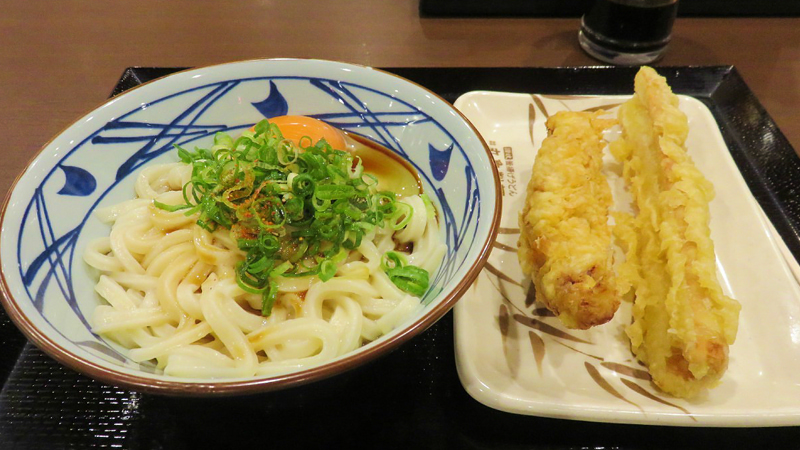 Somen Noodles and Tempura
Somen Noodles and Tempura
Lines of food tents are a unique attraction when experiencing the Obon. The palatable street foods are an amazing addition to Obon dance viewing. There are many worth-trying street foods, like okonomiyaki (a kind of pancake), inarizushi (one type of sushi), takoyaki (octopus balls), yakisoba (fried noodles), and yakitori (chicken skewers). What's more, you can savor some Hawaiian-style treats, such as waffles, uji-kintoki shaved ice, Wow Wow Lemonade tea, and many more.
Partake Obon Festival With Odynovo
Obon has so much to offer that our guidance can't complete all the feasts. Only when you get every involvement in person can you enjoy every surprise packet of it. If you want more information about Obon, please contact us at [email protected]. We're also happy to recommend more Japanese festivals outside of Obon. For a wonderful cultural trip, travel with Odynovo and enjoy an individual itinerary based on your needs.
Quick Question
Related Posts You May Like
What Our Clients Say
Explore the latest verified reviews of Odynovo's travel services on Tripadvisor, Google, Trustpilot, Product Review and more trusted platforms.
SUBSCRIBE TO WIN A FREE TOUR
Subscribe to our newsletter for a chance to win a free 7-day tour to India! And more insider travel news, exclusive offers, and inspiration will be sent straight to your inbox. Check our previous newsletters and get some sparks.


